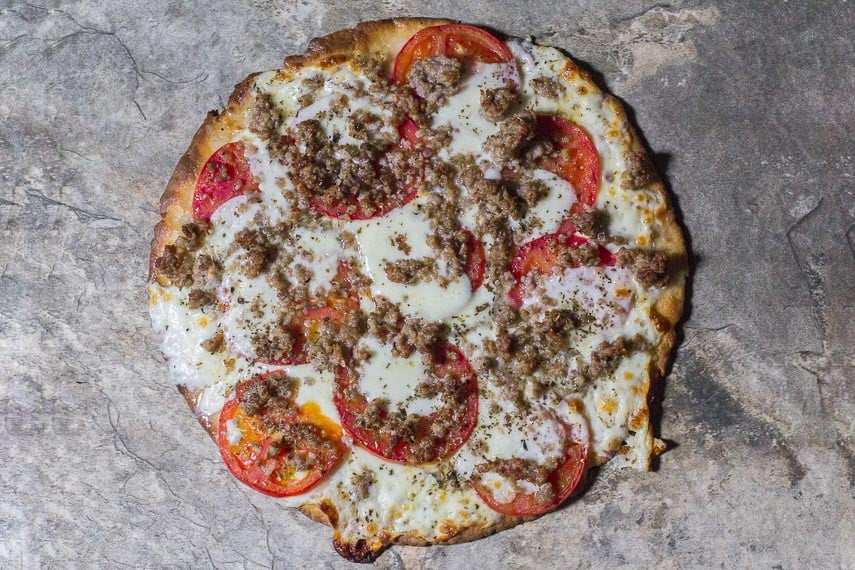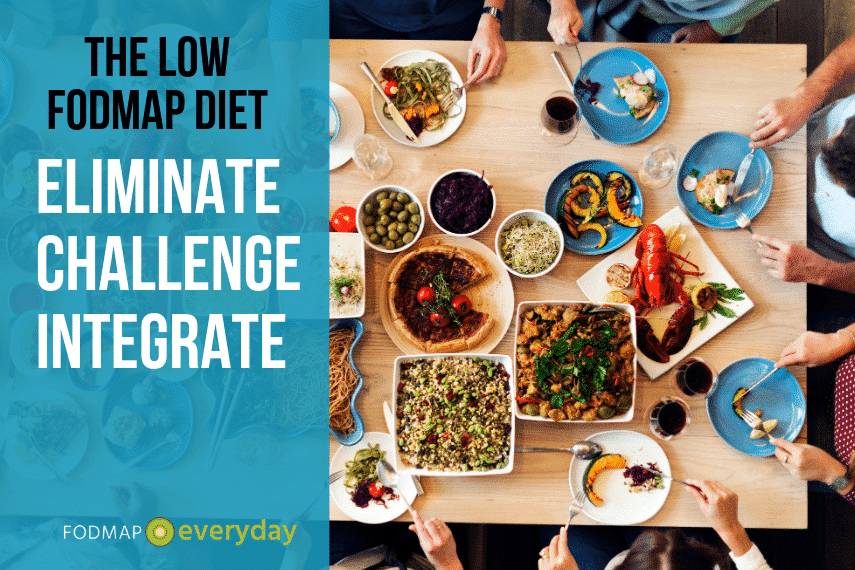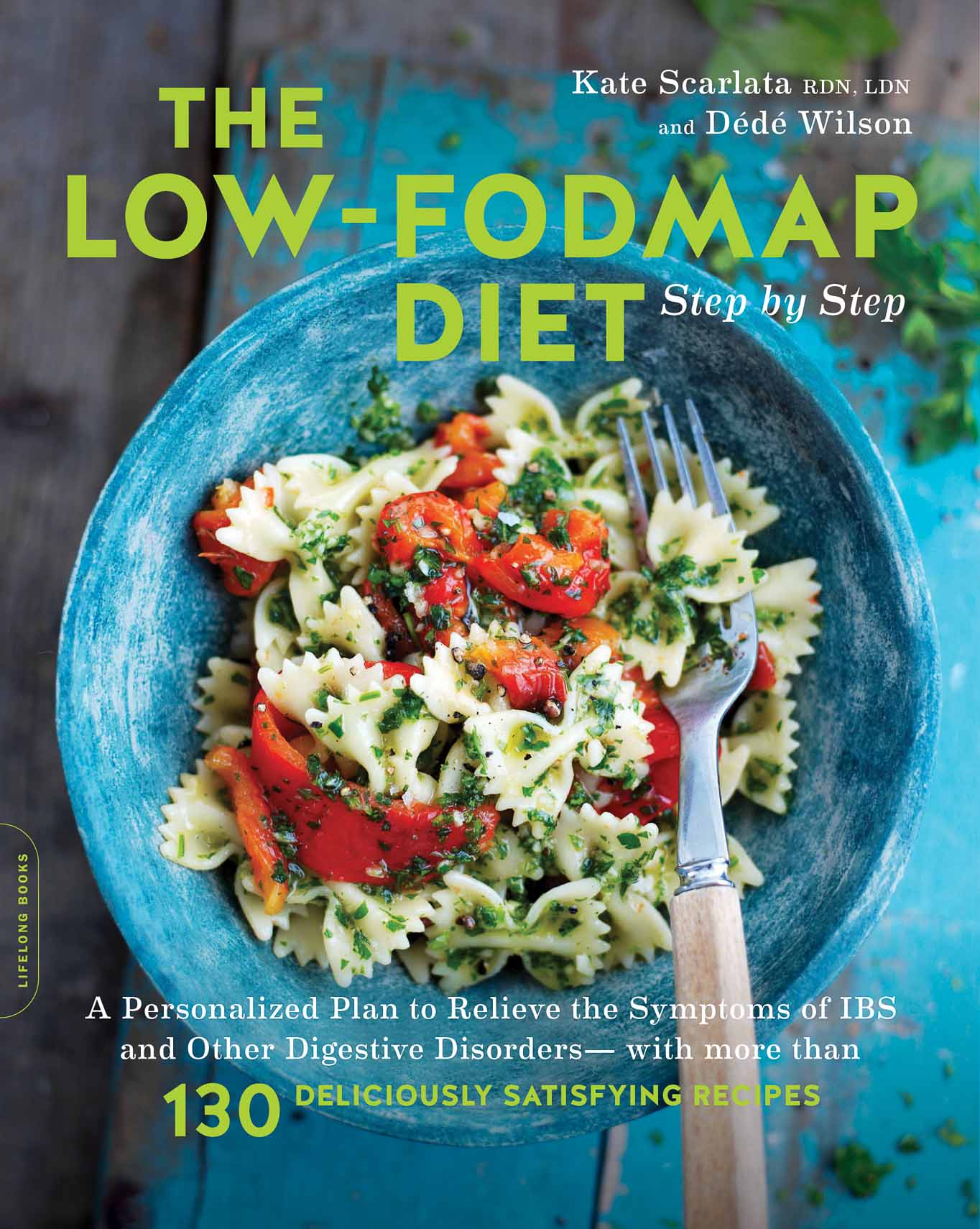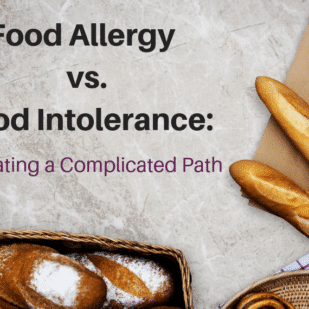The “Low FODMAP Diet” is NOT Just About The Elimination Phase
The “low FODMAP diet” is NOT just the Elimination Phase. We understand that this is confusing because so many resources – even medical doctors – will reference the “low FODMAP diet” when they are really talking about the Elimination Phase on its own.
This is a gross mischaracterization.
We cannot stress this enough: the low FODMAP diet is a learning diet. It is a phased diet. It only works if you follow the structure of the three phases, which we refer to as follows:
And, before we begin, we want to stress that it is highly recommended that you work with a FODMAP trained Registered Dietitian to create a structured Elimination and Challenge Phase that works for you and your unique GI system.
Let’s look at the low FODMAP diet, one phase at a time:
Elimination Phase
This is the phase that everyone is talking about. If your doctor, or a friend, or an article is describing the diet they are always talking about this part – and possibly not even mentioning the other phases.
The Elimination Phase is important. You will be cutting out high FODMAP foods, which will allow your GI tract to settle down. Many people experience relief right away, sometimes within days. This phase typically lasts anywhere from 2 weeks to 6 weeks and is NOT meant to be a long-term solution.
This is because, with such a restricted diet, nutrients are lacking that are needed for your gut health.
This is why you will sometime see resources saying that the diet is not meant for long-term use and/or that it is unhealthy in the long run. We have seen statements boldly declaring that the low FODMAP diet is not a lifetime diet. This is ONLY true if they are only referencing the Elimination Phase, but this is rarely specified.
This is where confusion often begins, as folks will equate the term “low FODMAP diet” with just the Elimination Phase.
Your RD will be able tell you when you are ready to move to the second phase, which we call the Challenge Phase.
Many people who attempt this diet on their own might move on to the Challenge Phase prematurely, before truly creating a baseline for themselves with a well-structured and monitored Elimination Phase. This is likely to negatively affect your success rate with the diet.
Work with a RD!
Challenge Phase
First I would like to address why we call the second part of the diet the Challenge Phase and not “Re-Challenge” or “Re-Introduction” as you will sometime see.
There might very well be a time when you DO perform a “re-challenge”, but that will be a subsequent time.
During the Challenge Phase, your RD will help you by constructing “Challenges” of various foods containing various FODMAPs.
You will Challenge your GI tract with individual FODMAPs, like sorbitol alone. You will also Challenge yourself with various foods from the same FODMAP group, for instance garlic, onions and wheat all contain fructans, but are typically tested one at a time.
With wheat, you might very well Challenge plain wheat bread as well as sourdough to establish gluten vs. fructan sensitivity.
If you do well with many FODMAPs individually, you can Challenge foods that contain multiple FODMAPs, like watermelon, which is a triple threat containing fructans, fructose and mannitol.
This phase of the diet is extremely nuanced and complex, both from the point of view of how the Challenges are structured and also how your reactions present themselves.
Working with a FODMAP trained RD will help you understand your reactions. If you reacted to watermelon, how do you know which FODMAP triggered symptoms? If you have intestinal bloating and pain 24 hours after a Challenge, what does that mean?
If you exhibit symptoms almost immediately after ingesting a Challenge food, is that a failed FODMAP Challenge? If you fart or belch an hour after a Challenge, does that constitute a failed Challenge?
Your RD will help you with these aspects and so much more.
Looking for help with the Challenge Phase? Check out Joe Leech and his course offerings. You can work at home on your own or engage with a FODMAP trained RD.
Challenge vs. Re-Challenge/Re-Introduction
At FODMAP Everyday®we use the word “Challenge” because we think it most accurately describes the actions at hand.
For instance, let’s say you Challenge milk and you determine that you can tolerate ½ cup (120 ml) of whole dairy milk without triggering symptoms, but that ¾ cup (180 ml) produces painful symptoms.
You would then know your dairy milk limit – AT THIS TIME.
You Challenge your GI system with milk. We use the word “Challenge” here because this is your initial Challenge of this FODMAP.
Six months from now or a year from now you might very well “re-challenge” or “re-introduce” ¾ cup (180 ml) of milk and be able to tolerate it. Your RD will help you determine the proper timeframe for you, but “re-challenges” are not done very often or close together.
[bctt tweet=”No one can know how you will react at any given time, which is why Challenges and “re-challenges” are so important. Your relationship and reactions to FODMAPs is unique to you – and can change.” username=”FODMAPeveryday”]
It is not discussed often, but re-testing is encouraged, because tolerances can and do change, positively or negatively, for many people.
If there is a particular food that you sorely miss, it is a great idea to “re-challenge” because you might be able to add it back into your diet for the first time, or possibly in more liberal amounts than was established at the initial Challenge.
And the goal of this phase of the low FODMAP diet is to help you eat as broadly and expansively as possible without triggering symptoms.
This is where the third phase comes in; it is time to Integrate.
Eliminate – Challenge – and now to Integrate!
When I was working on my book, The Low-FODMAP Diet Step-by-Step, with Kate Scarlata RD, I had the advantage of having worked through the diet for the first time very recently. Because I had fresh eyes and personal experience, I was able to make suggestions for our book, such as our use of the terms Eliminate, Challenge and Integrate.
At the time (2015), many people were using the term “low FODMAP diet” to describe the Elimination Phase only, and even those who were discussing challenges of individual FODMAPS were ending their discussions prematurely.
Kate and I both felt that more explanation was needed discussing what happens AFTER the Challenge Phase.
After a well-structured Challenge Phase, what comes next is an integration of your newfound knowledge of personal FODMAP triggers into your everyday life. This is how the term “Integrate” was adopted, and also was the inspiration for FODMAP Everyday®.
Integrate – Let’s Eat!
After you have established your tolerances for all the various FODMAP categories and sub-categories you will have what I call your unique FODMAP roadmap.
Everyone’s IBS presents differently. Your triggers might be lactose and garlic in particular. Your neighbor with IBS might be reactive to polyols and can tolerate garlic, but only in small amounts.
Each of you now has knowledge to Integrate the foods that you can tolerate into your meals and recipes. Integration is a very important part of the diet.
Why The Third Integration Phase Of The Low FODMAP Diet Is Important
The integration of foods into your diet that do not trigger symptoms is extremely important.
-
-
It is what allows us to establish a new normal.
-
It allows us to eat a wide variety of food without triggering pain.
-
This expansion of including food back into your diet is healthier, because you will have more access to a wider variety of nutrients.
-
Your diet, at this point, is a “lower” FODMAP diet and can be followed for a long time.
Integration = Normalization
If we learn that we can eat one small dish of ice cream, then we can eat along with everyone else at a birthday party.

Concentrate on what you can have, rather than what you can’t. And besides, upon “re-challenging” down the line you might indeed find out that you can have more than 1 slice.
The Takeaway
The low FODMAP diet is a complex system of multiple phases. The goal is to eat as broadly as possible without triggering IBS symptoms.
The best – and ONLY – way to determine your FODMAP tolerances is to go through well-structured Elimination and Challenge Phases, preferably with a FODMAP trained RD.
The Challenge Phase in particular will take some time to complete as thoroughly as possible. But it is so worth it.
Imagine a life without IBS pain. For 75% of you this could be possible, but your best chance of accomplishing this is to actually follow the diet, which entails 3 aspects.
-
Follow the Elimination Phase as recommended by your RD.
-
Continue following your RD’s guidance through a well-structured Challenge Phase.
-
Integrate! Take your hard-earned knowledge from monitored and carefully orchestrated Elimination and Challenge Phases and broaden your diet by integrating more foods, in the right amounts for you!
You might also be interested in our articles on What Is A Low FODMAP Serving Size?, How To Read a FDA Nutrition Facts Label and How To Read A Low FODMAP Certified Food Product Label and What If A Food Hasn’t Been Tested for FODMAPs?








